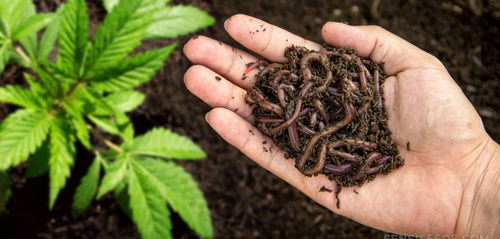#82: From Afghanistan to Canada: The Journey of Afghan Hash
#82: From Afghanistan to Canada: The Journey of Afghan Hash
The country of Afghanistan, situated between the Hindu Kush mountain range and the Iranian Plateau, has a long and storied history with cannabis that dates back thousands of years. And for centuries, Afghan farmers have been cultivating and processing hash, in a traditional method that has been passed down through generations.
This high-quality hash, known as Afghan hash or Afghani, has become famous worldwide for its potency and unique flavour profile. Using hand-pressed methods, Afghan hash has a dark and shiny appearance with a fudge-like consistency. Its popularity has only increased in modern times with the advent of new methods and technologies for producing hash.
If you're an old schooler who grew up in Eastern Canada during the 1970s and '80s, you most likely have fond memories of Afghan hash. And if you're a newcomer to the world of cannabis, it's worth exploring this classic concentrate that has stood the test of time.
To truly appreciate Afghan hash, you're going to need a bit of background on its history, production methods, and modern variations. So, let's dive into the world of Afghan hash and discover why it remains a beloved cannabis product to this day.
Baba Ku's legacy: The OG of Afghan hash

The history and cultural significance of hashish in Afghanistan stretches back to "antiquity", or ancient times. First mentioned in 11th-century Persian texts, hashish was an integral part of Sufi (Islamic mysticism) practices. It was believed to bring enlightenment and spiritual experiences when consumed.
Baba Ku, a Sufi mystic who used hashish in his teachings, is revered as the "father of cannabis or hashish" in Afghan culture. Legend has it that he and his followers consumed hashish in exceptionally large quantities, regarding it as both a divine sacrament and medicine. Baba Ku is traditionally depicted as puffing on a giant hubble-bubble pipe.
After Baba Ku's death, his disciples set up a shrine to him where they continued to cultivate cannabis in his memory. Pilgrims to the site were encouraged to smoke it up in remembrance of Baba Ku. To this day in Afghanistan, there are still hashish babas who venerate Baba Ku, gathering together in smoking fraternities to fire it up in his honour.
As time went on, hashish continued to play a significant role in Afghan culture and was commonly used for medicinal, spiritual, and social purposes. But what made Afghan hash stand out from other regional variations? And why is it still highly sought after today?
Water and tea: Secrets to consistency
Regarded as one of the finest in the world, Afghan hash has several unique characteristics that set it apart from other types of hashish. These include:

Quality: Afghan hash is known for its high quality and potency due to the ideal growing conditions in Afghanistan, such as fertile soil, sunny climate, and centuries-old cultivation techniques passed down through generations.
Production Method: Unlike the traditional hand-rubbing method used in other countries, Afghan hash is made by sieving the resin glands (trichomes) from the plant using a sieve and then compressing them into hash bricks or balls.
Distinct Taste and Texture : Afghan hash is renowned for its potent effects and bold, earthy flavours. It is often characterized by its deep brown or black colour and dense, elastic texture. The addition of a small amount of water or tea during pressing helps create this unique consistency.
Potency: High THC levels are another distinguishing characteristic of Afghan hash. The combination of ideal growing conditions and traditional production methods results in a potent product that can reach up to 60% THC.
Today, modern extraction techniques have made it possible for hash producers to increase the potency of their product even further, with some Afghan hash varieties reaching upwards of 90% THC.
The Canadian love affair with Afghan Hash
For decades, Afghan hash has been a popular product in the illicit market, with Canada being one of the main importers. The counterculture and hippie movements of the 1960s and 1970s played a significant role in introducing Afghan hash to Canada.
Since cannabis was legalized in 2018, Afghan hash has continued to gain popularity and is now being produced domestically by licensed producers. Using modern and traditional techniques, Canadian producers have been able to replicate the distinct taste and potency of traditional Afghan hash.
Some of the popular Afghan hash products available in the Canadian market include:
Phant Black Afghan Hash: Made by renowned legacy hash maker "The Hash Monster", this hash is exactly what an old-schooler would expect from traditional Afghan hash.
Highly Dutch Afghan Black Hash: Organic, cured for 60 days, and sourced from single-strain kief and frozen cannabis oil. Pressed using 15 tonnes of pressure, resulting in a solid, easy-to-crumble brick.
Earthwolf Afghan Hash: A modern take on Afghan hash, made using only bubble hash with heat and pressure. With a soft and pliable texture, this hash is a delicious full-spectrum concentrate made from organic sun-grown cannabis.
The tradition of Afghan hash lives on in Canada, with many producers and consumers celebrating its rich history and potent effects. It's exciting to see how Canadian producers are putting their own spin on this beloved product, while still staying true to its roots.
A journey through culture and time
Since ancient times, hash has been an integral part of Afghani and Central Asian cultures. Its influence has spread worldwide, including in Canada, where it continues to gain popularity and evolve with modern production techniques.
Whether it's the traditional Afghan hash or new, innovative products, one thing is for sure - Afghan hash holds a special place in the hearts of many, and its legacy will continue to thrive for generations to come.
Back to all posts










